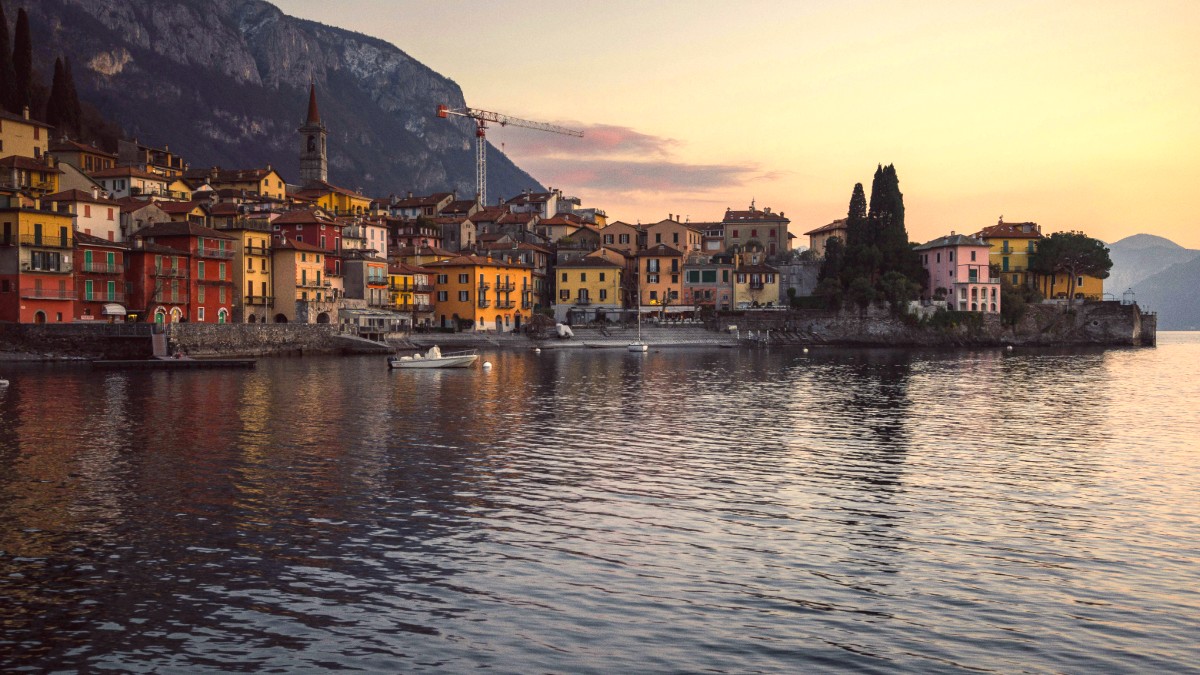
The Italian Lakes, Italy
Beyond its visual appeal, Lake Como provides a calming atmosphere. The lake's gentle rhythm encourages slow travel, allowing you to savor each moment. Imagine morning coffees with lake views, afternoon boat rides exploring hidden coves, and evenings spent dining on local delicacies. This destination caters to diverse interests, with opportunities for active adventures like hiking and water sports, alongside quiet contemplation in historic gardens. It presents a destination where every turn presents a new vista, and every village tells a story.
Think of the crisp mountain air carrying the scent of blooming flowers. Lake Como creates sensory experiences. It welcomes you to unwind, to connect with nature, and to appreciate centuries of human artistry.
This guide provides the facts to help you navigate this special place, making your visit enjoyable and fulfilling.
Lake Como, or Lago di Como in Italian, sits within the Lombardy region of northern Italy. It lies approximately 50 kilometers (31 miles) north of Milan, accessible from a major international hub. The lake's distinctive inverted Y-shape, with three narrow branches converging near Bellagio, is a defining feature. The southwestern branch leads to Como city, the southeastern branch to Lecco, and the northern branch extends towards Colico. This shape makes for interesting ferry routes and many towns offer stunning, varied lake views.
The lake has an alpine origin, carved by ancient glaciers. This depth influences the water's clear, deep blue color and helps regulate the local climate. Surrounding the lake are pre-alpine mountains, forming a dramatic backdrop. These mountains protect the lake from harsh northern winds, creating a mild microclimate.
Lombardy region, Northern Italy, 50km north of Milan.
Inverted Y-shape with three branches.
146 square kilometers (56 square miles), Italy's third-largest lake.
Deep glacial lake surrounded by pre-alpine mountains.
Mild due to mountain protection.
Its long, narrow shape, combined with the mountainous terrain, means lakeside roads can be winding and sometimes challenging to navigate by car. However, the abundant ferry network makes traversing the lake simple and pleasurable. The central lake area, formed by the convergence of the three branches, contains some of the most famous towns, including Bellagio, Varenna, and Menaggio. This central position offers convenient access to a wide array of attractions and a constant flow of scenic beauty. The geographical layout means that each town provides unique perspectives, from sun-drenched eastern shores to the more sheltered western banks.
The lake's shores vary from gentle slopes near the water's edge, where villas and towns nestle, to steep cliffs that plunge directly into the deep waters. This varied topography presents diverse opportunities for activity, from lakeside promenades to challenging mountain hikes.
The consistent presence of water and mountains defines the region's character, creating a landscape that shifts with the light and seasons, presenting new perspectives with every visit.
Explore the different branches of the lake. Each arm presents unique views and a distinct ambiance.
Lake Como's appeal dates back to Roman times. Wealthy Roman aristocrats first recognized its beauty and mild climate, establishing it as a summer retreat. This tradition of wealthy patronage continued through the centuries, shaping the lake's architectural and cultural landscape. Historic villas, dotting the shoreline, showcase centuries of design and horticultural development. These grand estates, often with elaborate gardens and ornate interiors, serve as enduring testaments to the lake's enduring allure for the elite.
Noteworthy figures found inspiration and respite here. Pliny the Younger, a Roman senator and writer, owned multiple villas on the lake, writing about its calming influence. During the Renaissance, figures like Leonardo da Vinci visited, drawn by the region's natural beauty and possibly its strategic importance for trade. Over subsequent centuries, European nobility, artists, and writers regularly frequented the lake, contributing to its reputation as a place of refined leisure and creative inspiration. This long history of attracting prominent individuals imbued Lake Como with a sense of timeless elegance.
The lake's position at the foot of the Alps made it a connector between Italy and northern Europe, fostering cultural exchange and economic prosperity.
Como city developed a strong tradition in silk production, becoming an European leader in the industry, another layer to the region's cultural identity.
Artists and writers frequented the lake, contributing to its reputation as a place of refined leisure and creative inspiration.
The preservation of these historical villas and gardens provides visitors with a tangible link to the past. Places like Villa d'Este, Villa Carlotta, and Villa Balbianello are not just buildings.
Lush gardens, historic villas, and the deep blue of the lake reflecting alpine peaks.
A destination for those seeking beautiful scenery, a relaxing pace, and refined cultural experiences.
Explore quaint lakeside towns, each with its own character.
Lake Como is a place to slow down, to appreciate the interplay of land and water.
Absorb a culture rich in art, history, and natural beauty.
It promises a journey filled with serene moments and memorable discoveries.